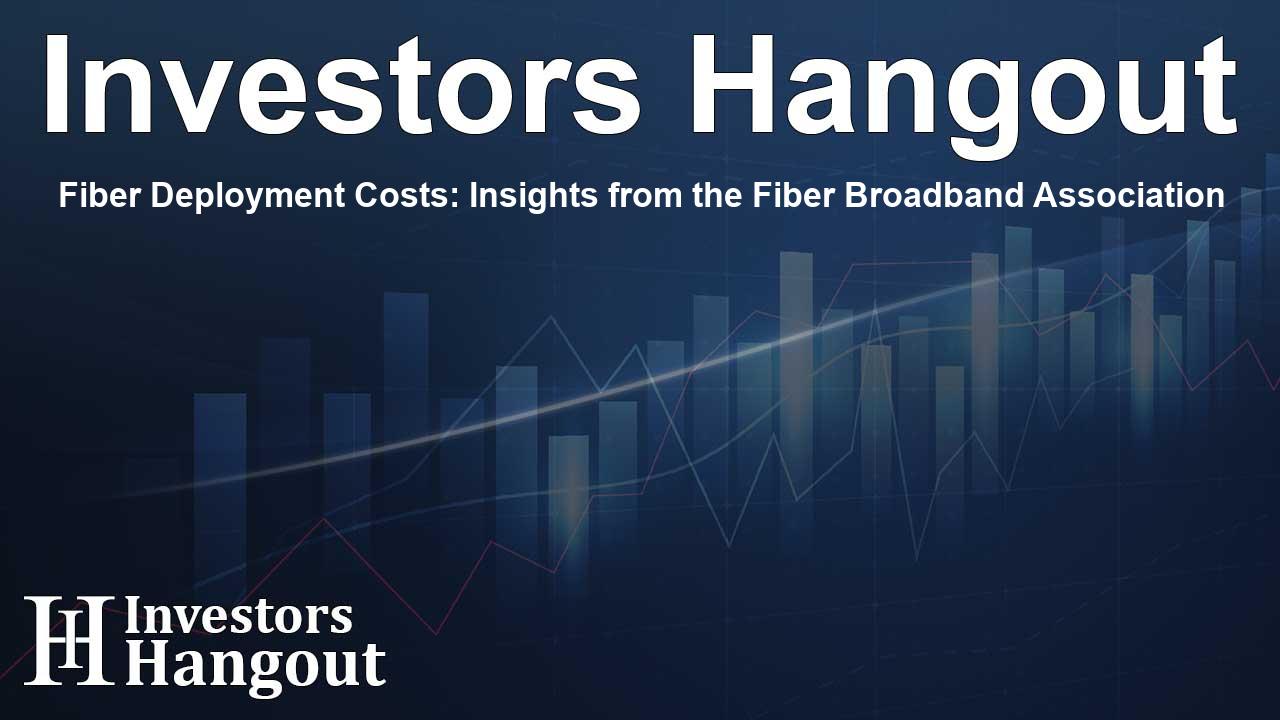Fiber Deployment Costs: Insights from the Fiber Broadband Association

Fiber Deployment Costs: Insights from the Fiber Broadband Association
The Fiber Broadband Association has recently shared critical findings regarding the costs associated with fiber deployment. This annual report, initiated by Cartesian, seeks to unravel the complexities surrounding fiber broadband deployment, revealing significant insights for both industry stakeholders and policymakers. As broadband service providers assess cost trajectories, they predict that these expenses may remain consistent or slightly rise in the near future.
Current Cost Trends in Fiber Deployment
A notable observation from the report is that year-over-year median costs for underground fiber deployment have increased by 12%. However, aerial deployment costs have notably remained stable. These insights are paramount as they illustrate how evolving cost structures can influence the expansion of fiber networks, a necessity for improving internet access across various regions.
Expert Opinions on Fiber Infrastructure Investments
Deborah Kish, Vice President of Research and Workforce Development for the Fiber Broadband Association, emphasized the importance of understanding fiber deployment costs. She explained, "Fiber remains the leading preference for telecommunications investments. Our study serves as a crucial benchmark for industry stakeholders and policymakers to devise effective strategies for deploying resilient, extensive fiber networks that cater to the needs of all Americans."
Factors Influencing Deployment Costs
Further discussions in the report indicate that rising labor and material costs are contributing to the increase in fiber deployment expenses. Labor alone is reported to account for a substantial portion of these costs, ranging from 60% to 80%. The report elaborates on the different construction techniques and their impact on costs, indicating that plowing has emerged as the most cost-effective method for underground builds, while trenching incurs the highest expenses. For aerial deployments, findings suggest similar cost levels between Strand and Lash and ADSS cabling methods.
The Role of Government Funding
Exciting opportunities for funding are on the horizon, as new federal and state initiatives are set to roll out, such as a substantial program in Texas designed to boost fiber deployment in rural areas. This influx of financial support, coupled with private sector investments, is expected to propel the fiber industry to unprecedented levels of deployment in the coming years, despite the looming cost challenges. Michael Dargue, Vice President at Cartesian, anticipates that 2025 could yield another record-high year for fiber broadband deployment.
Webinars and Future Insights
To aid in the dissemination of this information, an in-depth discussion regarding the Fiber Deployment Cost Study will take place during an upcoming webinar. This interactive session aims to provide stakeholders with actionable insights into managing deployment costs and ensuring that wiring remains effective and robust.
Engaging the Fiber Broadband Community
The Fiber Broadband Association, serving as the largest trade organization for the fiber broadband sector, is dedicated to fostering advancements in this field. By supporting service providers, municipalities, and policymakers, the association contributes to building a comprehensive framework for making informed decisions on fiber network deployment. Since its inception in 2001, it has played a pivotal role in connecting communities with the essential infrastructure that drives economic growth and social equity.
Frequently Asked Questions
What was the primary focus of the Fiber Deployment Cost Annual Report?
The report examines the evolving costs associated with fiber broadband deployment, providing insights into how these trends impact the industry.
Who conducted the Fiber Deployment Cost Annual Report?
The study was conducted by Cartesian, a recognized consultancy in the telecommunications space.
What factors contribute to the rising fiber deployment costs?
Increasing labor and material costs are primary contributors, with labor accounting for 60-80% of deployment expenses.
What construction technique is the most cost-effective for underground fiber deployment?
Plowing has been identified as the least expensive method for underground builds, while trenching incurs the highest costs.
When will the Fiber Deployment Cost Study be discussed in-depth?
An in-depth discussion will be held during a webinar, designed to educate stakeholders about effective deployment strategies.
About The Author
Contact Evelyn Baker privately here. Or send an email with ATTN: Evelyn Baker as the subject to contact@investorshangout.com.
About Investors Hangout
Investors Hangout is a leading online stock forum for financial discussion and learning, offering a wide range of free tools and resources. It draws in traders of all levels, who exchange market knowledge, investigate trading tactics, and keep an eye on industry developments in real time. Featuring financial articles, stock message boards, quotes, charts, company profiles, and live news updates. Through cooperative learning and a wealth of informational resources, it helps users from novices creating their first portfolios to experts honing their techniques. Join Investors Hangout today: https://investorshangout.com/
The content of this article is based on factual, publicly available information and does not represent legal, financial, or investment advice. Investors Hangout does not offer financial advice, and the author is not a licensed financial advisor. Consult a qualified advisor before making any financial or investment decisions based on this article. This article should not be considered advice to purchase, sell, or hold any securities or other investments. If any of the material provided here is inaccurate, please contact us for corrections.
